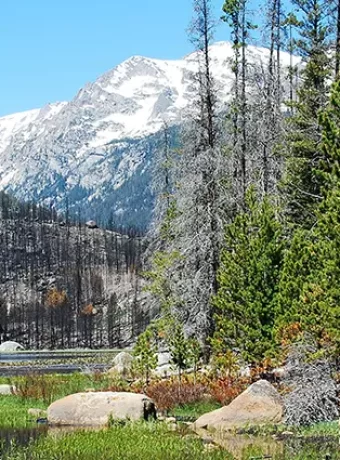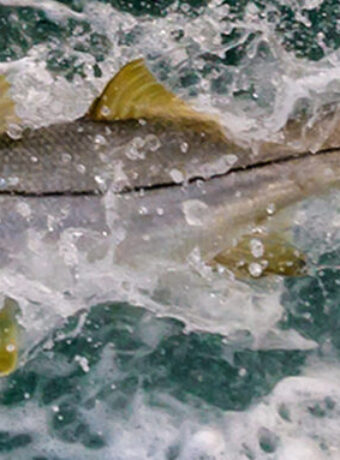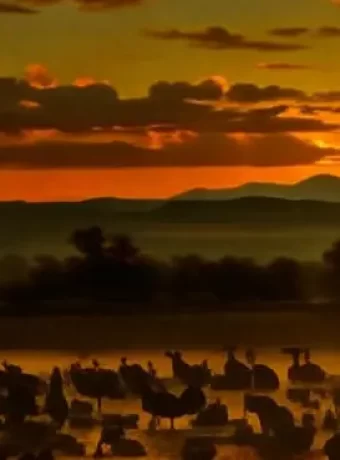4-Day Fly Fishing Trek Alice Lakes, Pettit, Toxaway, Loop in the Sawtooth Mountains
Thinking about a 4-Day Backpacking and Fly Fishing Trekking the Pettit Toxaway Alice Lakes Loop in the Sawtooth Mountains? You are in the right spot. This trip is something special, a premier backpacking trip in the Sawtooth Mountains Idaho. Nestled in Idaho’s rugged Sawtooth Mountains, this hike loop offers incredible alpine views and fantastic fishing. If you want adventure, this 4-Day Backpacking and Fly Fishing Trekking the Pettit Toxaway Alice Lakes Loop in the Sawtooth Mountains will deliver memories for a lifetime.
This journey blends tough hikes with chances to cast into pristine alpine lakes. Maybe you are a seasoned angler aiming to fool wary trout. Or perhaps you just like waving a fly rod amidst amazing scenery in the Sawtooth Wilderness. You will learn about trails, the best flies for these mountain waters, and maybe share a laugh about common trail mishaps, because everyone makes a few out there.
So, get your boots ready and that fly rod assembled. Let us explore this Sawtooth Mountains adventure together, focusing on the celebrated Alice Toxaway loop. As I sit and recall, for a it’s been a few decades since I have done this trip. If you backpack It’s an incredible trip. Fly fish as well, you have hit a home run.
Before I ramble on more, the first time I did this trek was one of my first solo backpacking trips in the late 70’s. I took off not prepared and knowing better. One of those spur of the moment things. By my return to the trailhead my hiking shoes at the time a pair of red Converse with the soles barely attached. What an awesome trip.
Table of Contents

Preparation and Planning: Gearing Up for the Wild
Before you hit the trail for your backpacking Alice Toxaway loop, we need to discuss planning. The Alice-Toxaway Loop, a classic lake loop, often starts at the Tin Cup Trailhead. This trailhead is near Pettit Lake and the Pettit Lake Campground. It is about a 2-hour drive from Ketchum, Idaho, through stunning landscapes leading to the Sawtooth National Forest.
A wilderness permit is required for overnight stays; you can usually get this free at the trailhead. Just fill it out completely, as this information helps the Forest Service keep track of visitors and assist in emergencies. Check current regulations before you go, as fire restrictions or other rules may be in place.
Some hikers choose to do this loop clockwise, but the counter-clockwise direction described here (Tin Cup to Alice Lake first) is popular. This route tackles the climb to Alice Lake early. A habit I formed early when I first started backpacking, If possible do the hard climbs early in the trip. Proper food storage is mandatory to protect wildlife, especially from black bears.
What to Pack
For backpacking, think light but thorough; your total mileage will be significant. You will need a lightweight tent suitable for mountain conditions, often three-season. A sleeping bag rated for chilly mountain nights, perhaps 20°F (-6°C) or lower, is smart, paired with an insulated sleeping pad. A comfortable backpack, properly fitted and between 50-65 liters, makes all the difference on a multi-day backpack trip.
A reliable water filter or purification system is crucial because streams and lakes are your drinking source. You should also bring waterproof boots for the trail and perhaps sandals or water shoes for creek crossings. A small backpacking stove, fuel, and cooking pot are essential for hot meals and morning coffee. And a bear canister or sufficient rope and knowledge to properly hang food is very important; black bears are active in the Sawtooth Mountains and are very clever about accessing improperly stored food.
For fly fishing, a 3 to 6-weight fly rod, about 7.5 to 9 feet long, works well for the trout here; a 4-piece rod is easiest to pack. Pack your reel and a weight-forward floating line. A tapered leader, about 9 feet long ending in 4x to 6x tippet, is standard. Bring a selection of flies too; we will cover those soon. Polarized sunglasses are indispensable for spotting fish and protecting your eyes. A small, lightweight net makes landing fish much easier and gentler on them if practicing catch-and-release.
Essential Backpacking Gear Checklist
| Category | Item | Notes |
|---|---|---|
| Shelter | Lightweight Tent | 3-season, appropriate for number of hikers. |
| Sleep System | Sleeping Bag & Pad | Bag: 15-20°F rating. Pad: Insulated for warmth. |
| Pack | Backpack | 50-65 liter capacity, with rain cover. |
| Cooking | Stove, Fuel, Pot, Utensils | Lighter/matches in waterproof container. |
| Water | Filter/Purifier, Water Bottles/Reservoir | Carry at least 2-3 liters capacity. |
| Food | Meals & Snacks | High-energy options, plus bear canister/Ursack for food storage. |
| Navigation | Map, Compass/GPS | Know how to use them. Download offline maps. |
| Safety | First-aid kit, Headlamp, Knife/Multi-tool | Sunscreen, insect repellent, emergency shelter. |
| Clothing | Layering system, Rain Gear, Hat, Gloves | Wool or synthetic fabrics. Extra socks. |
| Fly Fishing | Rod, Reel, Line, Leaders, Tippet, Flies, Net, License | Forceps for hook removal. Polarized sunglasses. |
Always carry the Ten Essentials for safety in the backcountry. Your preparedness can make a challenging situation manageable. This list isn’t exhaustive but covers the main items for your Sawtooth adventure. Now I have a disorder, called camera gear and carrying too much of it by most standards. The other Item I forgot to add to the upper list is a bear bag or barrel for food storage and bear spray are both a must.
When to Go
The best time for this Alice Toxaway lake loop adventure is from mid-July to September. Snow has mostly melted from the high mountain pass trails by then. Wildflowers are usually blooming profusely, creating carpets of color. Fish are generally active during this period, making for rewarding angling opportunities. June can work, but you might find significant snow on high passes like Snowyside Pass, potentially requiring an ice axe and traction devices. You might also encounter higher water levels in any small stream crossing.
October offers beautiful fall colors but is a bit of a gamble with early winter weather. Late summer can sometimes bring smoky haze from regional wildfires, so check air quality reports. Always check the local weather forecast, perhaps from the National Weather Service, before you leave for your backpacking trip. Mountain weather changes fast, so pack layers, including good rain gear and warm insulation, regardless of the forecast.
Day 1: Hiking to Alice Lake – The Adventure Begins
Your journey starts at the Tin Cup Trailhead. It can be a busy place, especially on weekends during peak season, so a weekday start is often less crowded. Try to get there early to find parking. The lake hike to Alice Lake is about 5.5 miles with an elevation gain of around 1,600 feet. This is enough to feel it, but not totally exhausting, a good first day for your multi-day backpack adventure.
The Trail
You will start by walking along the north shore of Pettit Lake. It is a beautiful spot, with pine forests and distant views of rugged peaks, possibly even the White Cloud mountains on a clear day. The lake trail is relatively flat here, a good warm-up. About 1.2 miles in, you will reach the Sawtooth Wilderness boundary; say goodbye to cell service now and embrace the solitude. Beyond this point, different regulations apply, emphasizing Leave No Trace principles.
From there, the trail begins to climb steadily through a lodgepole pine and fir forest. You will hear the crunch of needles under your boots as the path switchbacks up the mountainside. Your legs will feel the ascent, but the views over your shoulder of Pettit Lake and the valley make the effort worthwhile. Keep an eye out for wildlife like mule deer, pikas, marmots, and various bird species. I nearly stumbled when a deer appeared suddenly from the trees on a previous trip.
Around mile 4, you will encounter a creek crossing. In July, it is often an easy hop across some well-placed rocks. But after a wet spring or early summer melt, you might be wading through shin-deep, cold water. I learned that soggy socks can really spoil a good hike quickly; those extra sandals or water shoes are a great idea here. Past this creek, the trail levels out somewhat. Soon, you will get your first glimpse of Alice Lake, with the magnificent granite face of El Capitan towering above it, a truly iconic Sawtooth mountain formation.
Camping at Alice Lake
Campsites are found around the lake’s northern and western shores, often tucked into clusters of trees. These spots can fill up fast in the summer months, particularly on weekends. Aim to arrive by mid-afternoon to secure a good one. Choose an established spot at least 200 feet from the water’s edge to protect the fragile environment, a key Forest Service guideline. Setting up camp is your next task.
I remember a bold chipmunk, a common sight at any lake campground in the area, trying to steal my trail mix as I set up my tent. It was a good reminder to always secure your food, even during a brief snack break. Be aware that jays and ground squirrels are also notorious for pilfering unattended food items. Proper food storage is critical, not just for bears but for all wildlife.
Once your camp is ready, relax and enjoy the stunning view. Alice Lake’s clear, turquoise water reflects El Capitan and the surrounding peaks perfectly, especially in the calm morning or evening light. The silence is profound, broken only by an occasional bird call or the splash of a fish jumping. This brings us to the next activity.
Fly Fishing at Alice Lake: Chasing Brook Trout
Alice Lake is home to many brook trout, and it’s a popular alpine lake for anglers. These colorful fish make fly fishing here very enjoyable. They are the main catch in this lake, though some reports mention cutthroat trout as well. They can sometimes be quite selective, especially when insect hatches are sparse. Early morning or late evening are often the best times to fish. Midday can be too sunny and bright, and the fish seem less active then, often retreating to deeper water. Knowing about general fly fishing gear and techniques can really improve your chances on this high-altitude alpine lake.
Best Fly Patterns
Since brook trout are common here, let us discuss effective flies. For dry fly fishing, patterns like a Parachute Adams, Elk Hair Caddis, or a Royal Wulff in sizes 12 to 16 work well when fish are feeding on the surface. These attractor patterns imitate various insects and can often trick even wary trout. I had good success with a tan Elk Hair Caddis pattern one evening as fish were gently sipping bugs from the surface film just as the sun dipped behind Snowyside Peak.
If fish are not rising, try fishing subsurface with nymphs. Nymphs such as a Pheasant Tail (size 16-18), Hare’s Ear (size 14-18), or a small Prince Nymph can be effective. Adding a small beadhead to your nymph can provide extra weight to get down and a touch of flash. Fish it slowly under a small strike indicator, or try a Euro-nymphing technique if you are familiar with it. For potentially larger brook trout, or when no hatches are apparent, you could try a Woolly Bugger streamer. Sizes 8 to 12 in olive, black, or brown are good choices. Strip it back steadily or with short, erratic pulls, and be ready for a strike.
Tips for Fly Fishing Alice Lake
Approach the shoreline quietly and carefully, minimizing your silhouette. Brook trout in clear alpine lakes like Alice Lake spook very easily. Try to cast from a bit of a distance, using rocks or vegetation as cover if possible. Let your dry fly land softly on the water and aim for a drag-free drift. Watch for any ripples, flashes, or movement near your fly. My first cast on one trip was a bit clumsy, landing with a splash, and I think the fish for 20 yards scattered. But patience is important in fly fishing.
After a few more careful attempts, I hooked a lively brook trout. Its red spots and vibrant orange belly were brilliant in the sunlight. Catch-and-release fishing is strongly encouraged to help keep this fishery healthy for everyone. So, handle fish minimally with wet hands, take a quick photo if desired, and let the fish go gently. If the fish are not biting, do not worry too much. The view of El Capitan reflected in Alice Lake is a reward itself. Plus, you still have three more days on your lake hike to try your luck at other locations like Toxaway Lake or even an unnamed lake if you feel adventurous and consult your map for possibilities.
Day 2: Exploring Alice Lake and Twin Lakes
Day two is a chance to explore more around Alice Lake without moving your camp, or to make a day hike to nearby Twin Lakes. You can stretch your legs and fish some different water. After breakfast, perhaps after shooing away that curious chipmunk again, consider heading up to Twin Lakes. It is a short 1.5-mile hike from the northern end of Alice Lake, a great way to spend a few hours if you are not a day hiker just passing through.
The Hike to Twin Lakes
The trail to Twin Lakes climbs about 700 feet from Alice Lake. It winds through subalpine meadows often filled with vibrant wildflowers during mid-summer. You might see lupine, columbine, Indian paintbrush, and arnica in full color if your timing is right. The trail is steep in sections but quite short. The reward is seeing two beautiful, connected alpine lakes surrounded by rocky peaks and talus slopes. I stopped many times to just admire the views back down towards Alice Lake and across the expansive basin.
Twin Lakes feel even more wild and remote than Alice Lake. There are usually fewer campers around, as most are through-hiking the loop. This gives them a raw, untouched feeling. Find a nice spot by the water, perhaps on one of the rocky outcrops separating the two lakes. You might even have the place all to yourself for a while, a truly serene experience in the Sawtooth Mountains.






